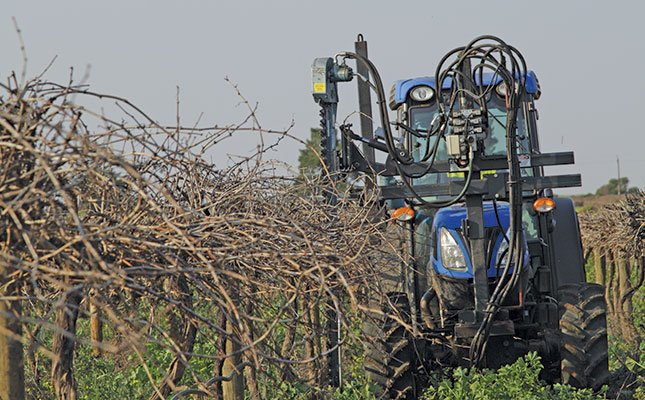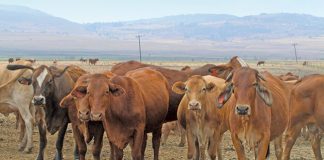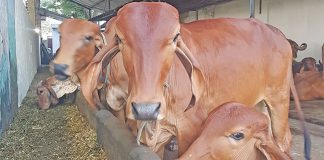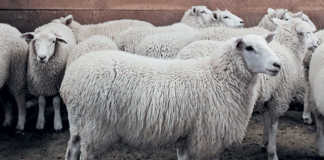
Photo: Supplied
Precision farming was born in the 1990s, with farmers initially making use of grid sampling to obtain a better idea of the fertilisation requirements of different areas of the same land.
From there, the technology steadily became more advanced, with satellites and thereafter drones being used to identify variations and areas where soil samples should be taken.
While farmers initially had to adjust inputs manually according to soil analysis results, farming equipment soon evolved to produce differential feeding, allowing for the automatic adjustment of applications. Farming equipment and these technologies have since become even more advanced, providing more detail and information.
“Machines these days can tap into much more information, for example climatic conditions, soil moisture levels and crop-related data such as the difference in the volume of grain harvested at specific locations. This enables farmers to save costs by helping them make better-informed decisions,” says Patrick Roux, managing director of equipment at agricultural services company AFGRI.
Along with this, new sensor technologies and the use of machine learning means that farming equipment can analyse lands in finer detail than ever before.
“In 2017, for example, John Deere invested in Blue River Technology, which allows for the identification of particular weeds. This enbles them to be removed with more specific herbicides to overcome the problem of herbicide resistance,” says Roux.
Automation
It might still be some time before unmanned tractors become mainstream, but agricultural machinery is becoming increasingly automated and user-friendly. Roux ascribes this to the scarcity of skills to operate agricultural machinery, as well as rising labour costs, not only in South Africa, but across the world.
“With the emergence of smart learning, artificial intelligence and global positioning systems, most new-generation tractors can function independently. Instructions and inputs can be entered remotely, resulting in fewer inputs being required from operators. The role of operators, in effect, has become more supervisory; they’re merely there to ensure smooth operation and for safety reasons,” he says.
Automation is also increasing the efficiency of even the most skilled operators, and enables them to pay more attention to the farming activity at hand instead of the driving of the vehicle.
Automation began a little over two decades ago with the introduction of GPS-led technology that enabled tractor and combine harvester operators to steer in a straight line.
“Some might have thought this overrated at the time, but the technology has resulted in huge fuel, fertiliser and seed savings by preventing overlapping while working the land during grain production,” says Roux.
Technical support
A decade or two ago, most grain farmers had many more farming machines and operators than today. “A big grain farm would have more than six tractors that would run consecutively, with backups in case of breakages,” says Roux.
Over the past decade, however, many grain farmers have replaced their fleets with one or two big tractors. While this has some financial benefits in terms of labour, operation and maintenance costs, it leaves the farmers more vulnerable when there is a breakdown.
“Farmers simply cannot afford to wait two to three days for replacement parts or for a mechanic to help them when they experience machine trouble. For this reason, most manufacturers have invested heavily in aftersales services to ensure the smooth running of machines. We, for instance, aim to get a machine up and running again within a few hours after a problem is reported,” says Roux.
In addition, most new-generation machines have been equipped with diagnostic technology that helps prevent problems by alerting farmers in good time when machines are due for servicing, and alerting service providers when parts need replacing.
Some of the new technology enables service teams to find faults remotely, or produces error codes when a fault occurs, improving communication between the farmer and the service team.
“The new technologies result in less time and money being wasted on going to and from farms to identify problems and then source parts,” says Roux.
Tractor sizes
While there has been an increase in the size of tractors used on grain farms over the past two decades, Jacques Taylor, managing director of CASE IH, Southern Africa, foresees only marginal increases in the future size of tractors and grain production machinery.
“Grain farmers will continue to replace smaller machines with larger ones, as this allows them to work more land with fewer pieces of equipment to drive efficiency.
“The size of these machines, however, is constrained by physical boundaries such as road and farm-gate sizes. Moving a big tractor to a farm is expensive and may require special permits and roadside assistance,” he says.
On the fruit production side, however, the shift towards higher-density plantings and orchards of higher-value crops, such as blueberries, citrus and nuts, is driving a trend towards smaller tractors, according to Taylor.
Mechanisation is especially evident in the wine grape industry, where machines are increasingly being used for pruning and harvesting vines that produce high volumes of grapes. Mechanical harvesting and picking, however, still seems to be a pie-in-the-sky idea for higher-value wine grapes, table grapes, citrus, and pome and stone fruit.
Fruit farmers are nevertheless using machines for spraying orchards, and with the trend towards regenerative farming, are planting cover crops that need to be rolled or mown.
Electric tractors
Manufacturers are investing heavily in the research and development of electric tractors, primarily for environmental reasons, but also because these tractors have the potential to be more powerful and have a lower energy cost than their fuel-driven counterparts.
Taylor identifies storage of energy as the greatest challenge with these tractors.
“Their performance is restricted by the currently available batteries, which need to be recharged for a couple of hours after four to five hours’ use. If the machines were self-driven and able to work through the night, regular recharging might have been justifiable, but farmers simply cannot afford to have a long downtime every few hours.”
Another reason why electric tractor machines may not take off in South Africa soon is that power in this country is still primarily coal-driven. The technology is not as environmentally friendly as it would have been if it were recharged with solar, wind or other energy sources.”
Taylor adds that a farmer would need a huge energy plant on his or her farm to recharge these tractors with solar energy.
Contractors
Technological advances have significantly increased the price of machinery, with a large modern tractor costing millions of rands. This, in combination with difficulties in sourcing operators, has resulted in more and more farmers, especially in some countries overseas, outsourcing work to contractors or participating in sharing schemes to reduce the cost of machinery.
This all has to do with economies of scale, explains Roux.
“Grain farmers with fewer than 300ha under production would struggle to economically justify an investment in planting, harvesting and spraying equipment. For them, it makes more sense to use contractors or hire the equipment from someone else.”
According to Taylor, sharing of machinery is a little more complex in South Africa than in most other countries due to very short planting and harvesting windows. “When you need to plant, most other farmers in your neighbourhood have to do the same.”
But careful planning, he adds, can overcome this difficulty.
Roux agrees, and AFGRI launched an online platform, Axl, in May last year to administer the convenient rental of farm equipment, facilitating the contract between the renter and the owner in a few simple steps online.
“Today, the platform has more than 500 equipment pieces listed, of which fewer than than 5% belong to AFGRI,” he says.
The high cost of modern tractors has also brought about the introduction of retrofit packages, explains Taylor.
“The beauty of retrofit kits is that farmers can install these technologies modularly. Farmers who have older tractors, or who can’t afford a full modern suite when buying a new tractor, can invest in only the technology they want if they have the money to do so.”
Email Patrick Roux at [email protected], or Jacques Taylor at [email protected].











